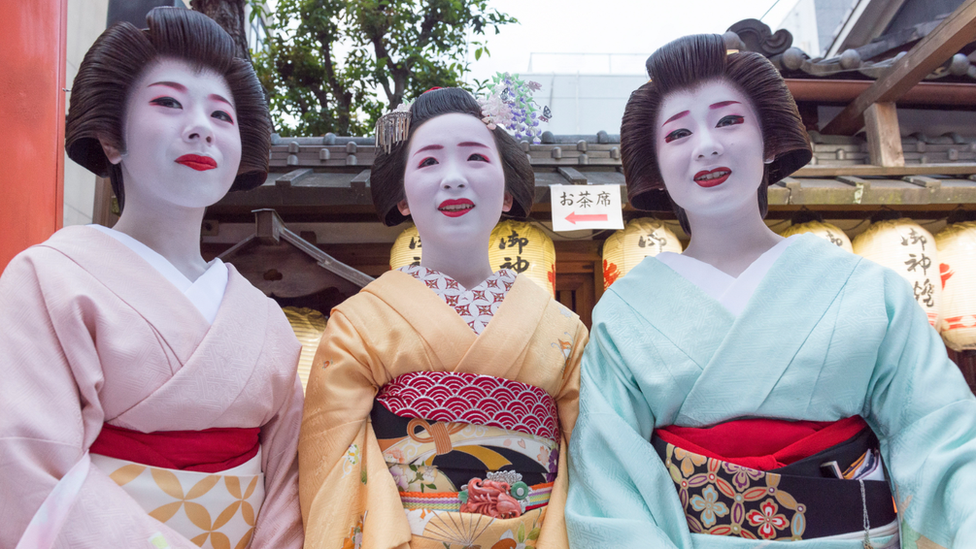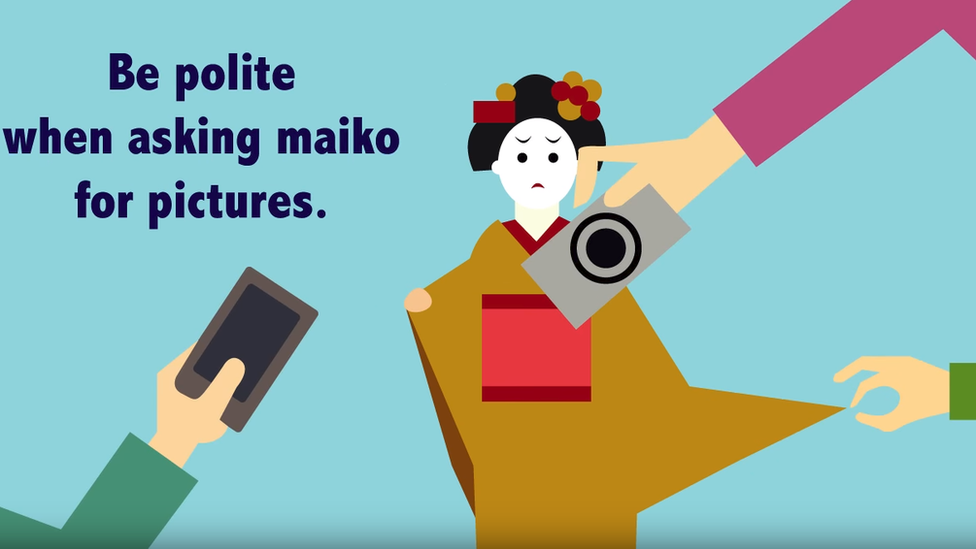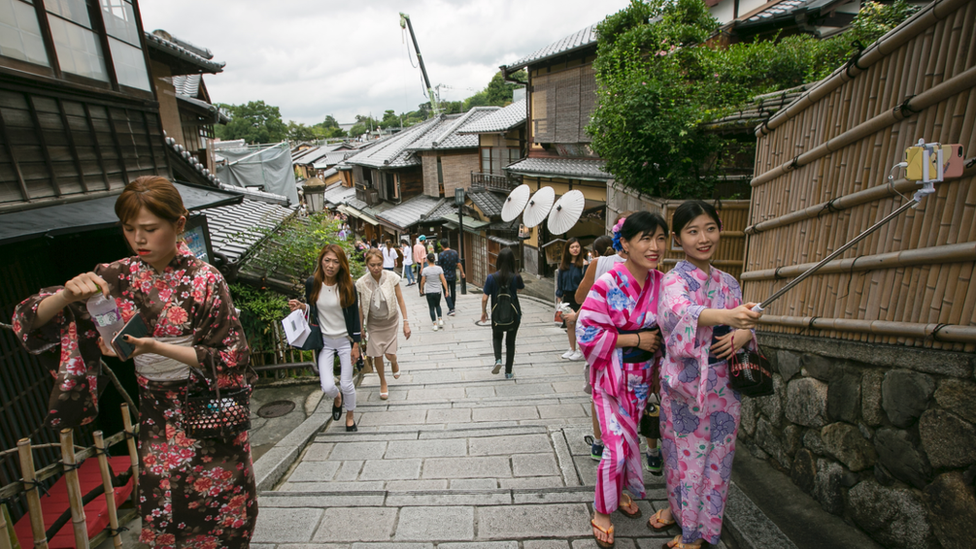Japanese city tries to improve tourists' manners
- Published

Geishas and their maiko apprentices are part of Gion's heritage
The Japanese city of Kyoto is handing out leaflets and paper lanterns to try to remind tourists how to behave in its historic Gion quarter.
Customers and shopkeepers have complained about overcrowding and inconsiderate behaviour as visitor numbers have ballooned in recent years, despite earlier attempts at encouraging better manners. So Gion council decided to remedy the situation with appropriate politeness, external, Kyoto Shimbun newspaper reports.
It commissioned students at Kyoto Women's University design school to come up with eye-catching content in Japanese, Chinese and English to put in goodie bags, and organised groups of friendly police officers, students and maiko - apprentice geishas - to hand them out to visitors.
The messages range from commonplace requests not to sit or smoke on the street, to more specific demands to ask before taking selfies with Gion's famous geishas, let alone touching them.

A 2017 video campaign was clearly not enough
Kyoto's tourism bureau published guidance to visitors on how to behave, external back in 2017, based on the local word "akimahen" - "it is forbidden", illustrated with jaunty graphics and promoted with a video on popular visitor rating sites.
The council has installed cameras and employed guards to stop visitors entering private premises, police cars patrol the streets, and a multi-lingual public broadcast system, external reminds tourists to respect the area, but it doesn't look like the message has got through, the Mainichi Shimbun daily reports.
You might also like:
Mass tourism is a relatively new phenomenon in Japan, and rose to a record 31 million people in 2018, external from 10 million just five years earlier, mainly from East Asia.
The Japan Tourism Organisation is aiming to attract 40 million next year.
Apart from substantial earnings, this has brought a host of problems, from illegal Mario Karts on the streets of Tokyo to giant graffiti in the Tottori Sand Dunes, external. In case the goodie bags don't work, Kyoto is looking at how to ease the numbers, if not improve the manners, of visitors in its historic districts.
A trial scheme offering information about congestion, external proved successful in Arashiyama district in November-December 2018.
It recorded the number of smartphones accessing Wi-Fi at the popular Bamboo Grove site, allowing 22,623 people to check updates and avoid peak times, Mainichi Shimbun reports.
The city is also promoting six locations near Kyoto, external, including the Fushimi Inari Shrine, in order to showcase the region's other attractions without undermining its way of life.

The streets of old Kyoto can get easily crowded
Reporting by Alistair Coleman and Martin Morgan
Next story: Bulgaria marks Jewish heritage with tourism route
Use #NewsfromElsewhere to stay up-to-date with our reports via Twitter, external.